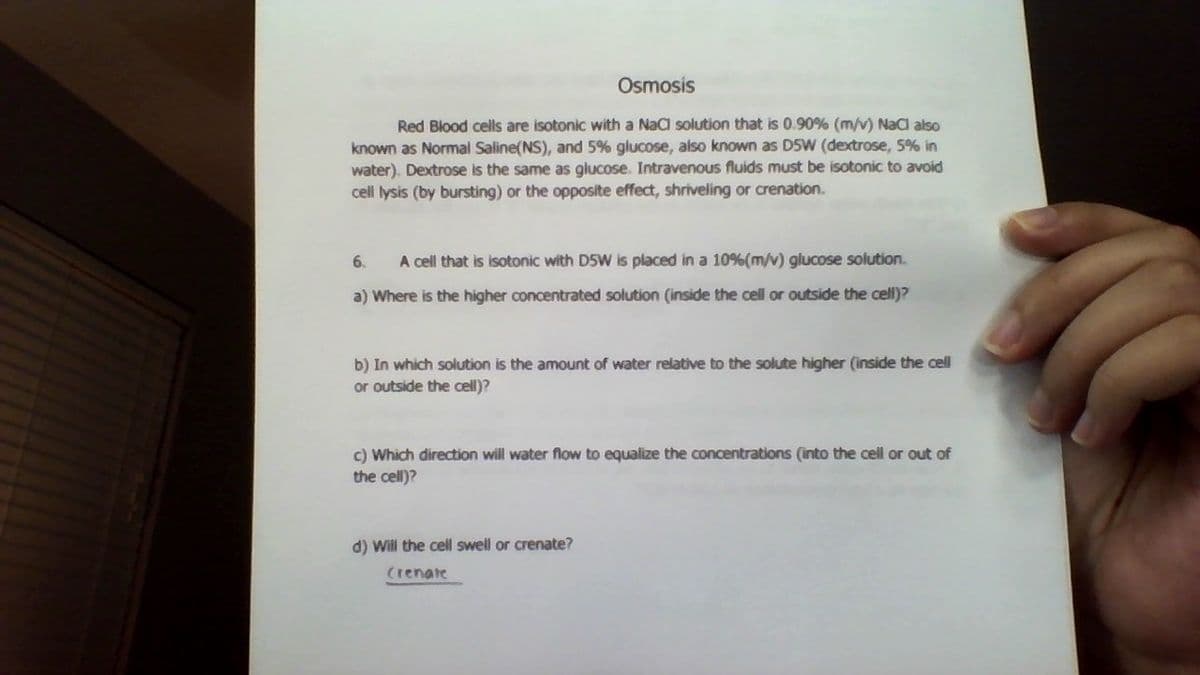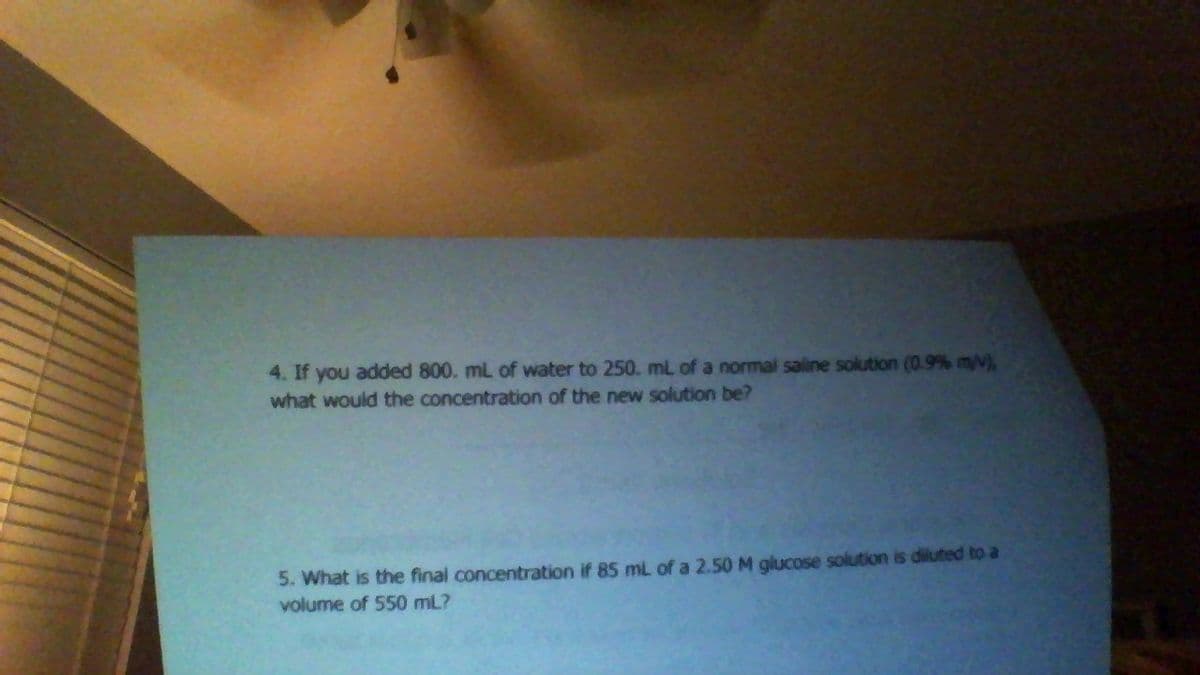Osmosis Red Blood cells are isotonic with a Nacl solution that is 0.90% (m/V) Nad also known as Normal Saline(NS), and 5% glucose, also known as DSW (dextrose, 5% in water). Dextrose is the same as glucose. Intravenous fluids must be isotonic to avoid cell lysis (by bursting) or the opposite effect, shriveling or crenation. 6. A cell that is isotonic with DSW is placed in a 10%(m/v) glucose solution. a) Where is the higher concentrated solution (inside the cell or outside the cell)? b) In which solution is the amount of water relative to the solute higher (inside the cell or outside the cell)? c) Which direction will water flow to equalize the concentrations (into the cell or out of the cell)? d) Will the cell swell or crenate? (renate
Osmosis Red Blood cells are isotonic with a Nacl solution that is 0.90% (m/V) Nad also known as Normal Saline(NS), and 5% glucose, also known as DSW (dextrose, 5% in water). Dextrose is the same as glucose. Intravenous fluids must be isotonic to avoid cell lysis (by bursting) or the opposite effect, shriveling or crenation. 6. A cell that is isotonic with DSW is placed in a 10%(m/v) glucose solution. a) Where is the higher concentrated solution (inside the cell or outside the cell)? b) In which solution is the amount of water relative to the solute higher (inside the cell or outside the cell)? c) Which direction will water flow to equalize the concentrations (into the cell or out of the cell)? d) Will the cell swell or crenate? (renate
Human Physiology: From Cells to Systems (MindTap Course List)
9th Edition
ISBN:9781285866932
Author:Lauralee Sherwood
Publisher:Lauralee Sherwood
Chapter3: The Plasma Membrane And Membrane Potential
Section: Chapter Questions
Problem 2SQE: One of the important uses of the Nernst equation is in describing the flow of ions across plasma...
Related questions
Question
This is for the last question "I am not sure how to answer 6a-d"
Also if you could answer 4 and 5 as well

Transcribed Image Text:Osmosis
Red Blood cells are isotonic with a NaCl solution that is 0.90% (m/v) NaC also
known as Normal Saline(NS), and 5% glucose, also known as DSW (dextrose, 5% in
water). Dextrose is the same as glucose. Intravenous fluids must be isotonic to avoid
cell lysis (by bursting) or the opposite effect, shriveling or crenation.
6.
A cell that is isotonic with D5W is placed in a 10%(m/) glucose solution.
a) Where is the higher concentrated solution (inside the cell or outside the cell)?
b) In which solution is the amount of water relative to the solute higher (inside the cell
or outside the cell)?
c) Which direction will water flow to equalize the concentrations (into the cell or out of
the cell)?
d) Will the cell swell or crenate?
(renate

Transcribed Image Text:4. If you added 800. mL of water to 250. mL of a normal saline solution (0.9 % m/V),
what would the concentration of the new solution be?
5. What is the final concentration if 85 mL of a 2.50 M glucose solution is diluted to a
volume of 550 mL?
Expert Solution
This question has been solved!
Explore an expertly crafted, step-by-step solution for a thorough understanding of key concepts.
This is a popular solution!
Trending now
This is a popular solution!
Step by step
Solved in 2 steps

Knowledge Booster
Learn more about
Need a deep-dive on the concept behind this application? Look no further. Learn more about this topic, biochemistry and related others by exploring similar questions and additional content below.Recommended textbooks for you

Human Physiology: From Cells to Systems (MindTap …
Biology
ISBN:
9781285866932
Author:
Lauralee Sherwood
Publisher:
Cengage Learning


Human Physiology: From Cells to Systems (MindTap …
Biology
ISBN:
9781285866932
Author:
Lauralee Sherwood
Publisher:
Cengage Learning
